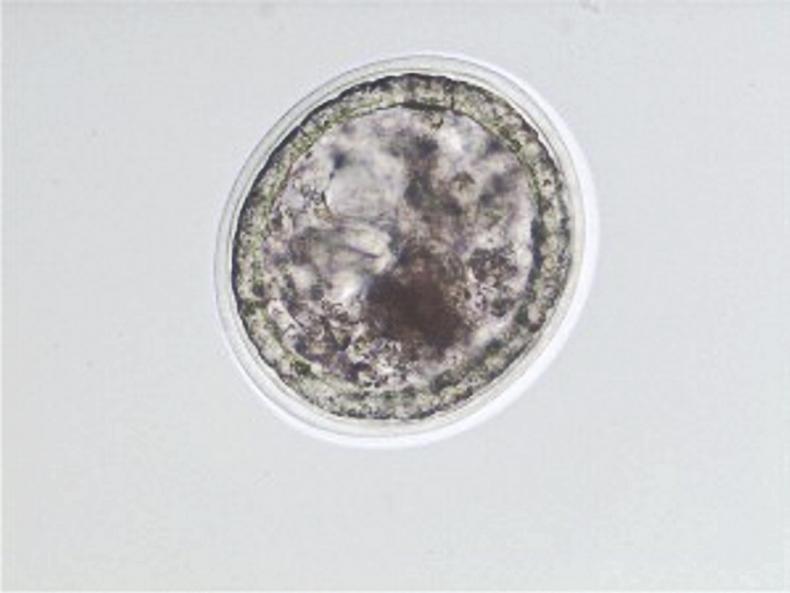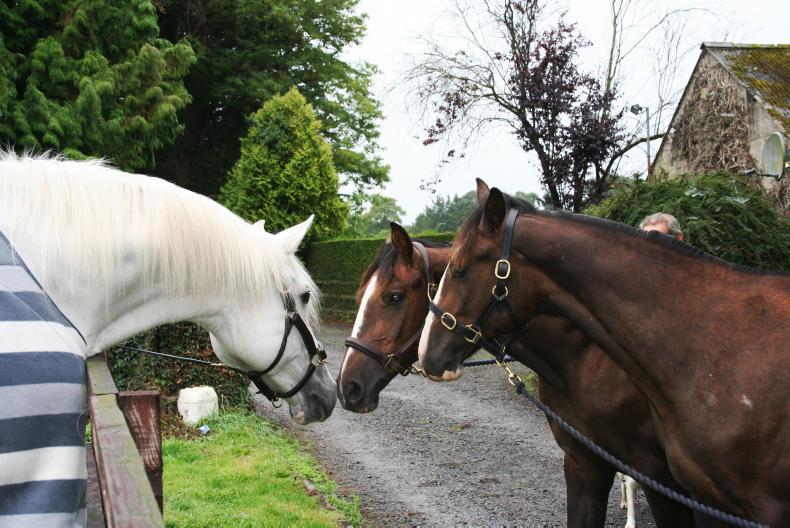Assisted reproductive techniques (ART) are new methods of overcoming mare and stallion sub-fertility. The discussion of all assisted reproductive techniques would be too much to cover in this article alone so we will discuss the more commonly used techniques; AI, embryo transfer (ET), and cloning.ART and pharmacological developments have improved reproductive efficiency of horses to a level not seen in other domestic species.
Assisted reproductive techniques (ART) are new methods of overcoming mare and stallion sub-fertility. The discussion of all assisted reproductive techniques would be too much to cover in this article alone so we will discuss the more commonly used techniques; AI, embryo transfer (ET), and cloning.
ART and pharmacological developments have improved reproductive efficiency of horses to a level not seen in other domestic species.
Despite these technological advances, it is still fair to say that the most important aspect of fertility is management (nutrition, yard husbandry, veterinary service, stallion handling, etc).
The thoroughbred registry does not register foals produced by any technique other than natural service.
ARTIFICIAL INSEMINATION
Artificial insemination has been around for centuries, but in the last few decades in particular it has formed the basis of the sport horse breeding industry in Europe, and for polo ponies, quarter horses and standardbreds in America and Australasia.
Semen collection and insemination techniques have been refined to make AI an excellent reproductive choice.
Pros
Artificial Insemination (AI) greatly increases the choice of stallion nationally and internationally, with the mare being able to be inseminated remotely. The technique reduces spread of disease. It is safer for both the mare (at cover and transporting) and the stallion. Permits evaluation of semen at each collection and immediate recognition of minor changes in seminal quality. Prevents overuse of a stallion, which is particularly important for a stallion with fertility problems, poor breeding habits, or which is injured. AI using fresh semen can have a higher success rate than natural service. AI using chilled semen can have success rates comparable with natural service. When frozen semen is properly processed and stored it retains its qualities for many years. Frozen semen allows use of stallions that have died. Frozen semen can be stored on-site at a clinic, avoiding issues with delivery. Cons
With AI, it is possible that one popular stallion could sire a very large number of foals, if this stallion subsequently was found to produce a major genetic defect in its offspring then potentially this could do much damage to the breed. It leaves fewer mares available for other stallions and so potentially there would be little variety in the market and in the breeding stock. A difficulty may arise with international delivery issues, e.g. delay in customs, incorrect semen delivered, etc. Incorrect management at the many different stages (semen collection, transport, storage, etc) may reduce fertility. The success rate for frozen semen is reduced (depends on a variety of factors, international accepted standard is only 40%). It is, therefore, not suitable for an aged or sub-fertile mare. Frozen semen has a very short time of viability once it is thawed (approximately six to eight hours). For this reason, mares must be checked at least four times daily once they are close to ovulation. Frozen semen is more expensive because of the intensive monitoring required. EMBRYO TRANSFER
 An equine embryo (Image: Sunita Jeawon MVB)
An equine embryo (Image: Sunita Jeawon MVB)
An equine embryo
A combination of increased interest in yielding as many progeny from a valuable mare as possible, coupled with relaxation of breed society registration restrictions, have together contributed to a similar upsurge in the application of embryo transfer to all breeds except thoroughbreds.
Pros
Obtaining foals from performance mares, allowing them to keep competing without interrupting their competitive career. Increases number of progeny from a valuable mare each year. Obtaining foals from two-year-old mares that are too immature to carry a foal themselves. Obtaining foals from reproductively unsound mares that can’t carry a pregnancy to term. Obtaining foals from mares with non-reproductive health problems.Cons
Many oocytes/embryos produced by aged, sub-fertile mares are inherently defective and have low survival rates after transfer to recipient mares. Therefore, aged, sub-fertile mares are not optimal candidates for embryo transfer. The efficiency of embryo transfer remains limited by the inability to reliably superovulate (pharmacological induction of numerous follicles to ovulate) mares like you can in cattle. Usually, only one to two embryos would be yielded per cycle. Labour intensive and difficult to synchronise recipient and donor. CLONING
 Cruising with his two clones as yearlings (Photo: Mary McCann)
Cruising with his two clones as yearlings (Photo: Mary McCann)
Cruising with his two clones as yearlings (Credit: Mary McCann)
The birth of the first cloned equids (three mules and one horse) occurred in 2003. In 2012, two clones of the famous Cruising were born in Ireland. Cloning can cost upwards of €100,000/animal. It is not for everyone or just any horse, but it is a scientific feat and peaks interest nonetheless.
In general, interest has been centred on whether or not the cloned offspring will be normal, will they be healthy and how closely they will resemble the donor animal. Although equine cloning is still in its infancy, sufficient information is available to provide us with some insight into this.
A variety of factors will affect the degree of similarity between the cloned offspring and the original donor. Environment is the main factor: management during maturation of the embryo in the lab, the recipient’s uterine blood supply, placental sufficiency, problems occurring during birth, milk supply, dam and foal nutrition, handling and exercise regimens, vaccination and deworming programmes, and training, all lead to differences in behaviour or phenotype of the horse.
The most vivid variations are differences in white markings, more or less bone, smaller or taller. The possibility of phenotypic variation in cloned offspring, as well as possible health problems associated with cloned neonates, makes it unlikely that the cloned offspring will perform at the same level as the donor animal.
The strength of cloning as a clinical procedure is in the progeny of the clone
The strength of cloning as a clinical procedure is in the progeny of the clone. Even if the cloned animal itself has some epigenetic (non-genetic) differences from the original donor, the epigenetic status of the DNA is reset when gametes (follicles/sperm) are formed. Although no information is available in this area in the horse, in all other species studied the progeny of cloned animals is normal.
Thus, the cloned animal’s progeny should not differ from progeny of the original animal. The main application of cloning is as a method for genetic banking, similar to freezing semen or embryos, so that progeny may be obtained from a genetic line after the original horse is no longer fertile or is deceased.
COST
The cost associated with any of the procedures mentioned below depends on the level of veterinary input. Contact your local veterinary practice for further information.





SHARING OPTIONS: